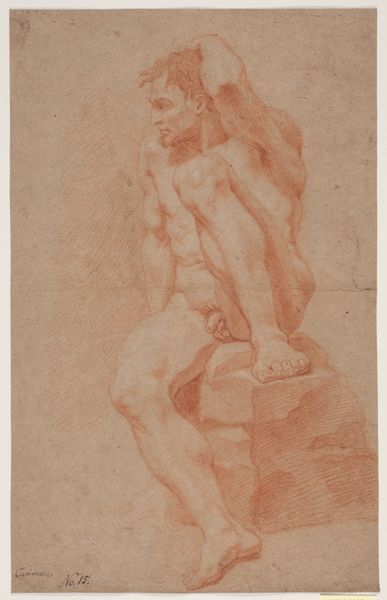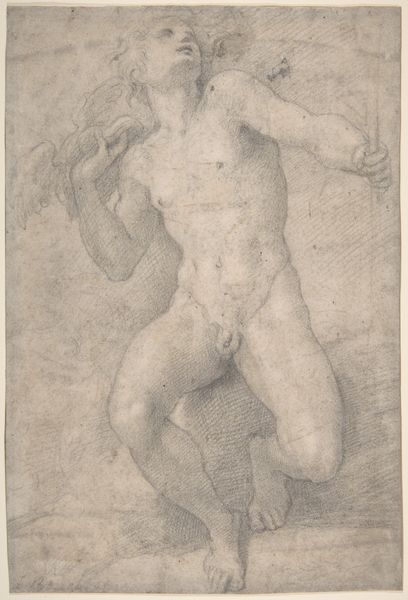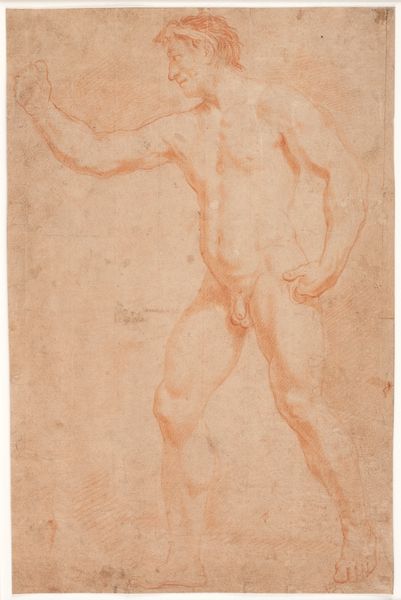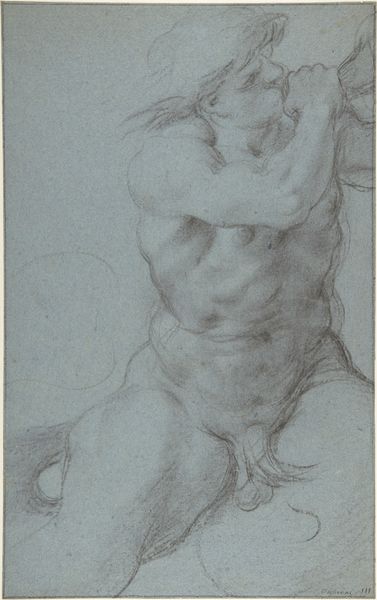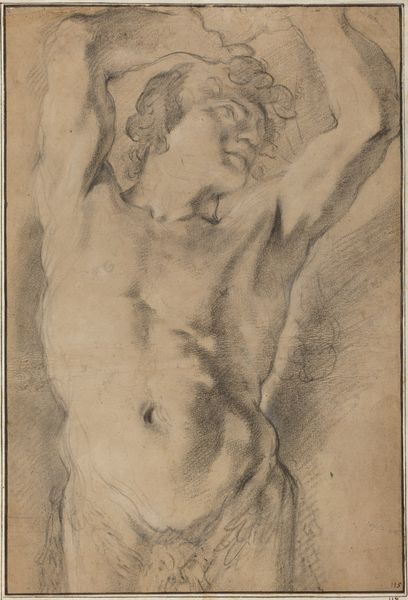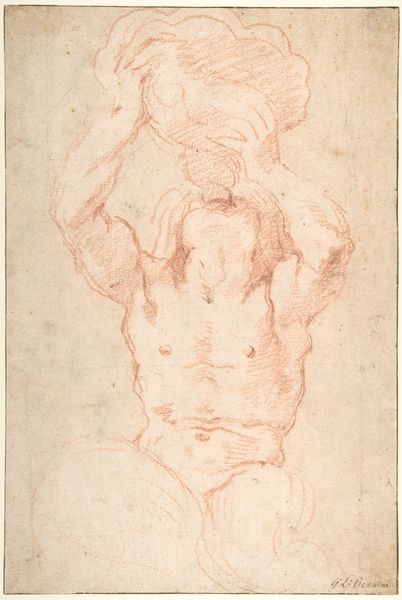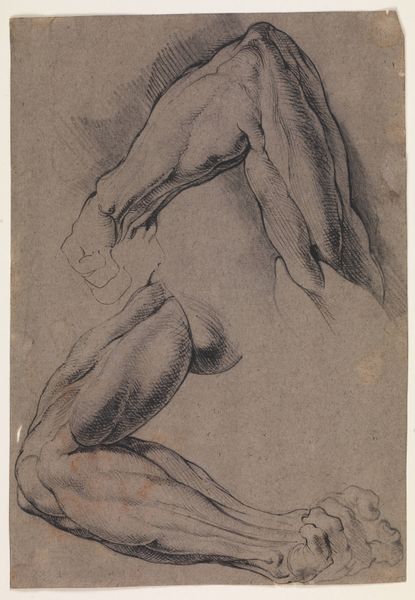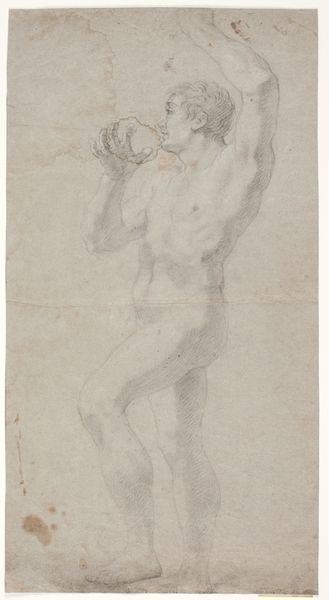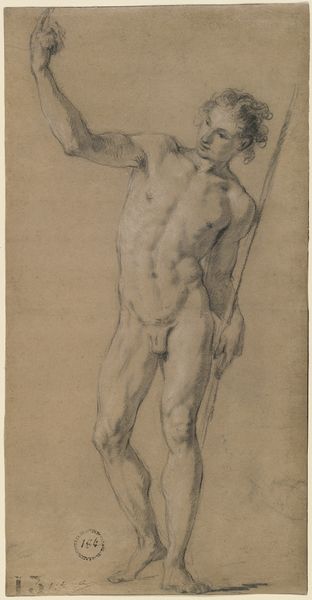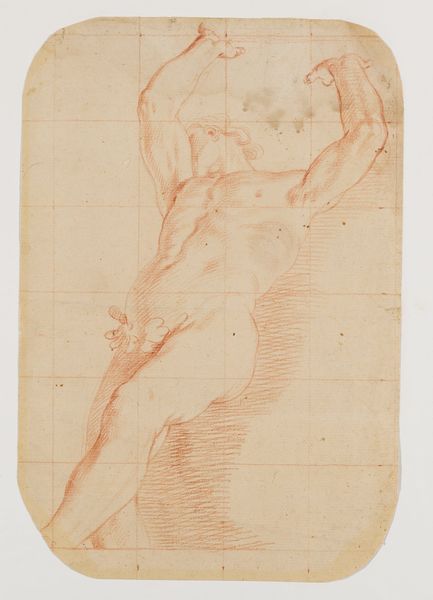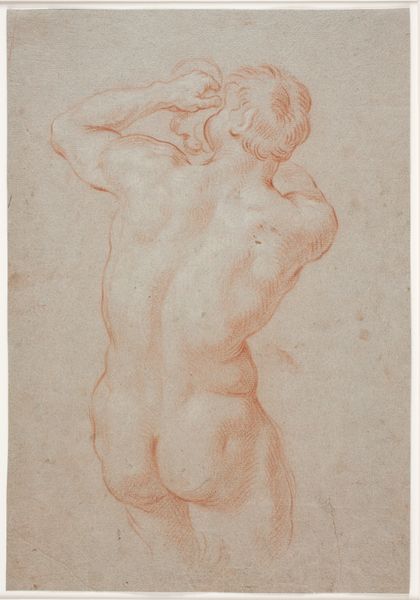
drawing, charcoal
#
drawing
#
charcoal drawing
#
figuration
#
11_renaissance
#
charcoal
#
history-painting
#
italian-renaissance
#
nude
Dimensions: sheet: 35.6 x 21 cm (14 x 8 1/4 in.) support: 40.5 x 24.7 cm (15 15/16 x 9 3/4 in.)
Copyright: National Gallery of Art: CC0 1.0
Curator: Here we have Guido Reni’s "Torso of Christ on the Cross," a charcoal drawing created around 1616. The way he captures light, especially around the abdomen, it almost feels like breath itself is visible. What strikes you first? Editor: There’s a real stillness about it, a quietness despite the obvious pain. The pose is inherently performative, designed to elicit a particular reaction. I immediately wonder about the audience and their position in relation to this image. Curator: Absolutely. It's a study, perhaps for a larger work. There's this tension in Reni’s hand, a dance between realism and idealization. The figure is clearly suffering, but it is idealized suffering. It almost has that quality of… acceptance. Editor: The torso as the focal point definitely concentrates the suffering. But where does this leave the legacies of colonial violence that used religion to justify slavery and other atrocities, right? How do we navigate this image without acknowledging this darker side of history? Curator: That's a critical lens. Reni worked in a world steeped in religious authority, patronage, and yes, colonialism. His paintings often walk that line between devotional art and almost…sensual form. But you do make me wonder if that aestheticizing distances us from the raw agony. Is it meant to comfort or confront? Editor: Maybe a bit of both? The intention, filtered through our contemporary understanding, transforms into something complex, layered. But seeing an image of tortured flesh rendered so meticulously invites reflection on whose bodies throughout history have been deemed disposable or less worthy of such tender representation. Curator: So much to consider! The way Reni uses charcoal…there is this smokiness, it’s like the torment is fading even as we see it, so perhaps he's inviting hope. Editor: I’m struck by how such an incomplete rendering manages to say so much about the power of image and its continuing role in structuring belief and power. Curator: It feels like, centuries later, these simple lines are still managing to provoke big feelings.
Comments
No comments
Be the first to comment and join the conversation on the ultimate creative platform.
